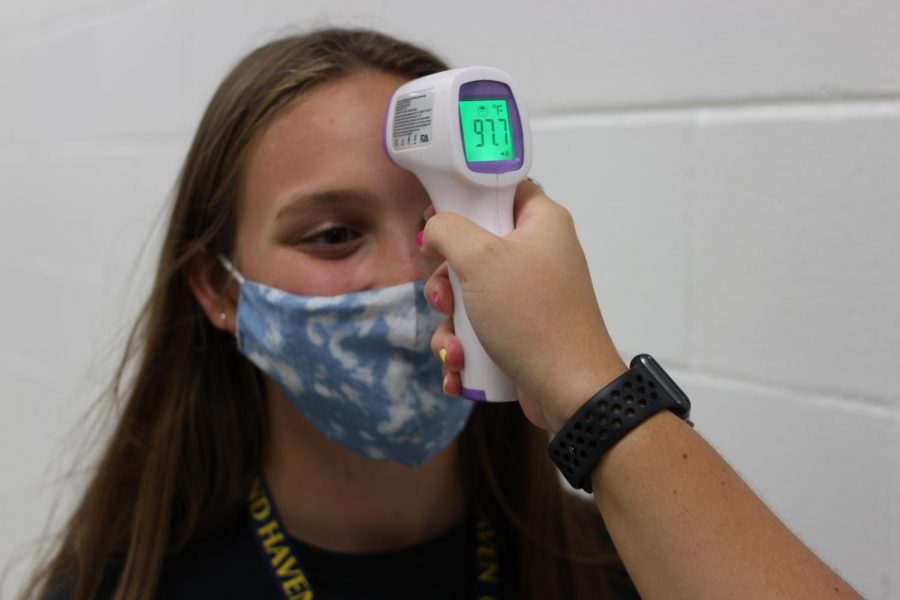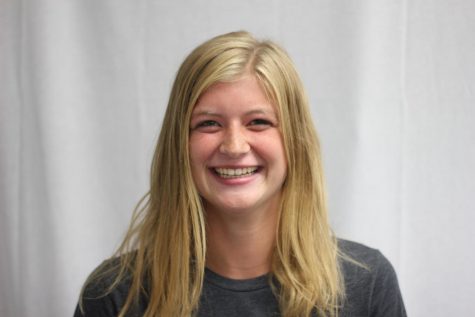COVID-19 changes daily routines
Students and staff must constantly monitor their temperature and continually check for COVID-19.
October 7, 2020
Since returning to school, the daily routines of students and staff have been significantly altered. Principal Tracy Wilson explains changes in school policies and the new restrictions that have been put into place.
Q: WHAT IS THE PURPOSE OF WEARING AN ID DAILY?
A: “It’s really hard to identify students and staff in the building when they have a mask on. Sometimes they wear a hat or they have their hoodie pulled up and all we can see are eyeballs. It’s hard to identify who people are. So, we know if you don’t have an ID on you might not belong in the building and we are going to be more apt to stop you and question who you are and why you’re in the building.”
Q: WHAT HAPPENS IF YOU ARE ABSENT FOR MULTIPLE DAYS?
A: “Prior to this year we’ve had an attendance policy that says if you are more than 10 days absent, then you have to receive 77% or higher on the exam to get credit in your class. Well, that part of the exam waiver attendance policy is not in effect right now.”
Q: WHAT SHOULD YOU DO IF YOU’RE FEELING SICK?
A: “Obviously we mandate that everybody is always checking in. If you’re not feeling well we want people to err on the side of staying home, just so that you don’t have the risk of spreading anything at school. Be real sincere about if you have a new symptom that is unusual for you: headaches, coughing, stomach ache, throwing up, diarrhea. Anybody that’s at 100.4 degrees or higher, needs to stay home. It’s really, really important that those things are looked at and paid attention to and that kids are just honest about it.”
Q: WHAT HAPPENS IF SOMEONE TESTS POSITIVE FOR COVID-19?
A: “If you do test positive then, typically, we get notified by the parents before we get notified by the health department. Any positive test is notified to our contact person, which in our district it’s over at the Central Office. That administrator will contact the building of the student or the adult that tested positive. Then we have to go through contact tracing and we have to determine who that person was in contact with for 48 hours prior to the test. For that 48 hour period, two school days, we have to look at what classes they were in and what activities they were involved in. Then we have to look at who is considered a contact person, and it has to be somebody who is closer than six feet for more than 15 minutes, and it doesn’t matter if you have a mask on.”


